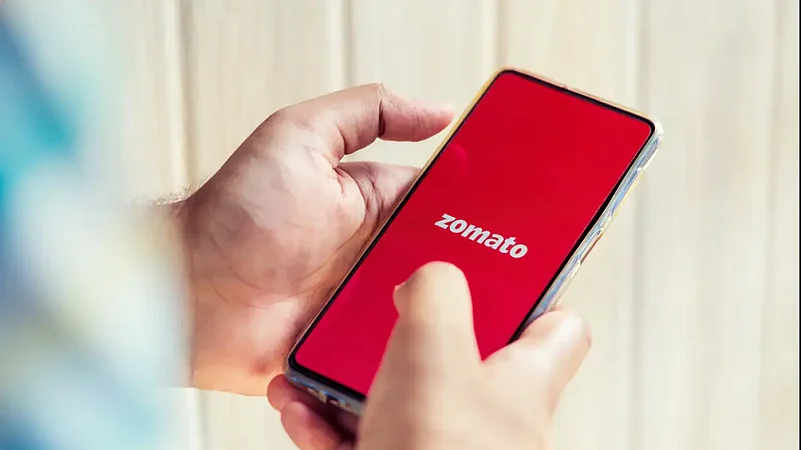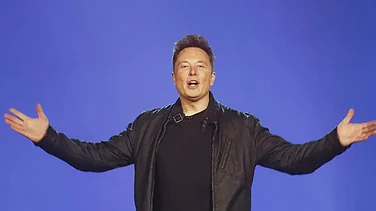Nearly a year after Zomato—the online food aggregator proposed to acquire Blinkit—a hyperlocal delivery company, the company’s board finally approved the acquisition of an all-stock deal worth Rs 4,448 crore to buy the quick delivery platform last week. Blinkit, previously known as Grofers, entered the unicorn club last year. With the much-anticipated acquisition, which grabbed the eyeballs of even Zomato’s investors, the company has forayed into the quick commerce space—a segment that the online food aggregator had been eyeing for quite some time. Unlike e-commerce, quick commerce refers to delivering groceries/FMCG products in a span of 15 to 20 minutes to the customers.
Advertisement
Deepinder Goyal, co-founder of Zomato said in the regulatory filing, “As a food company, we are already tapping into the large food delivery opportunity in India. In addition to that, we now also want to focus on quick commerce as a natural extension of our food delivery business. How is it a natural extension? Because it is also a hyperlocal business, just like food delivery. And, because it also caters to a need for quick delivery of products for our customers. Quick commerce will help us increase the customer wallet share spent on our platform and also drive higher frequency and engagement from our customers.”
Advertisement
The development comes months after the quick delivery company reported huge losses and the online food aggregator launched its 10-minute delivery app, ‘Zomato Instant’ across four stations in Gurugram.
Dark Stores For Zomato
With this acquisition, Zomato will get access to the 400 dark stores of Blinkit. Notably, as a cost-cutting measure, Blinkit had earlier scaled down the number of dark stores from 450 to 400. Dark stores—which are a quintessential part of the quick commerce space, are the retail distribution warehouses that stock up a variety of products from third-party distributors and FMCG companies. When a customer places an order online, the dark stores’ staff picks and packs the ordered items to be directly shipped to the customer’s location. Notably, dark stores are usually located closer to the delivery locations.
The dark stores owned by Blinkit have a large inventory. According to the regulatory filing, “Blinkit has visibility into inventory owned by third party distributors and retailers that stock 4,000 stock keeping units (SKUs) across a variety of product categories, in a network of warehouses and distributed dark stores. The delivery radius for a dark store is typically less than 2 kilometres, which allows for quick delivery of products.”
Notably, in FY2021, the company generated Rs 64.33 crore from its third-party distribution network, which was 28.1 per cent higher compared to Rs 50.23 crore from the same vertical in FY20.
Advertisement
Moreover, the acquisition of dark stores aligns with the online food aggregators’ newly launched app ‘Zomato Instant’ which promises food delivery within 10 minutes. Launched in competition with Swiggy’s Instamart, Zomato Instant is struggling to meet the time target, which can be attributed to the location of dark stores further away from the delivery location, according to reports.
Unlike its competitors like Swiggy Instamart, Zepto, and Dunzo, which have their own dark stores across the quick commerce space, the online food aggregator has attributed acquiring the dark stores as a time-saving and cost-saving measure.
Akshant Goyal, Zomato’s Chief Financial Officer said, “Blinkit’s proprietary tech platform, the scale of business, relationships with third-party brands and sellers, and the warehouse & dark store network made it a compelling choice for us to buy vs building it in-house. It would have cost us a significant amount of time (and therefore a disproportionate intangible cost) to build this in-house.”
Advertisement
However, despite Zomato’s aim to be profitable through Blinkit’s dark stores within a year, would take a considerable amount of time.
JM Financial in a note said, “Blinkit’s deal EV is at 1.5 times basis 5MCY22 annualised GMV, indicating 19 per cent discount to Zomato's current valuation multiple of 1.85 times basis 1QCY22 annualized GMV, marginally lower than the 25 per cent discount we suggested in our valuations framework for quick commerce players. Given the intense competitive intensity in the quick commerce space, we believe that the path to profitability for Zomato group (post-acquisition) can get extended by at least a year (from FY25 to FY26).”
Advertisement
Notably, despite the company’s revenue growth to Rs 2,725 crore in FY21, Blinkit’s losses piled up to Rs 6,127 crore. Zomato’s stock tumbled over 6 per cent on Monday.
Competitive Quick Commerce Space
Zomato will be entering a highly competitive quick commerce market with Blinkit’s acquisition. The space already has Tata Group backed Big Basket, Softbank-led Swiggy Instamart, Y-Combinator-led Zepto, and Dunzo. According to a report by Redseer, the Quick Commerce space in India is expected to grow 15 times to touch $5.5 billion by 2025.















 Just one email a week
Just one email a week